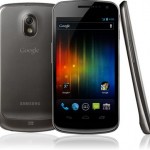 Jorge Luis Borges, Argentine writer, essayist, poet and translator explored the age-old dream of all the world’s knowledge presented in some valuable, useful or interesting form. To what extent does Google’s approach fulfill it?- posted on OWNI.eu
Jorge Luis Borges, Argentine writer, essayist, poet and translator explored the age-old dream of all the world’s knowledge presented in some valuable, useful or interesting form. To what extent does Google’s approach fulfill it?- posted on OWNI.eu
On Tuesday, search engine giant Google introduced a new form of bookcase called an ‘Infinite Digital Bookcase’, designed in the form of a 3D helix. The helix can be spun from side-to-side and up and down with your mouse. The helix holds 3D models of more than 10,000 titles from Google Books.
Creators Aaron Koblin, Google’s Data Arts Team and Bill Schillit, Google’s research team writer say on the Google office blog, “A digital interface needs to be familiar enough to be intuitive, while simultaneously taking advantage of the lack of constraints in a virtual space. In this case, we imagined something that looks like the shelves in your living room, but is also capable of showcasing the huge number of titles available online, many more than would fit on a traditional shelf.”
The books are organized into 28 subjects. To choose a button, the user will have to click the subject button near the top of the screen. The user will then be taken to the subject chosen. Choosing a book is also visually appealing. When clicked on, the book bounces in the same manner that an icon bounces on an Apple Mac application dock. After loading, a 3D version of the book pops off the shelf and displays to the user a page with title, author information as well as a short synopsis serviced by Google Books API.
You can have a glimpse of the Infinite Digital Bookcase below:
{iframe width=”560″ height=”315″ align=”top”}http://www.youtube.com/embed/6GqhJDPi-Ug{/iframe}
In case the user wants to read the book, they have the option of purchasing it from Google Books or take a picture of the QR code with their mobile device to read it on the go. If a user is interested in free books, they can go to the ‘Free Books’ section in the subject viewer.
The visuals are supported by WebGL, a technology in Google Chrome and other updated browsers that enable fast, hardware accelerated 3D graphics right in the browser without the need for a plug-in.
Tablets and eReaders offer a number of new ways to read a book and consequently, Google Books has been relatively ignored. The new bookcase from Google may not prove to be a competitor to Kindle but rather to the whole system of book service. It could also be a way to entice people to purchase Google books.
Aaron and Bill recommend using Google Chrome and a fast computer with a powerful graphics card to get the best experience. The blog states, “Even with new hardware, this interface is experimental and may not work on some machines.”
Google Books is a service from Google that searches the full text of books that Google has scanned, converted to text using optical character recognition and stored in its digital database. In 2010, Google estimated that there are about 130 million unique books in the world and that it intends to scan all of them by the end of the decade. By October of 2010, Google announced that the number of scanned books is over 15 million.


